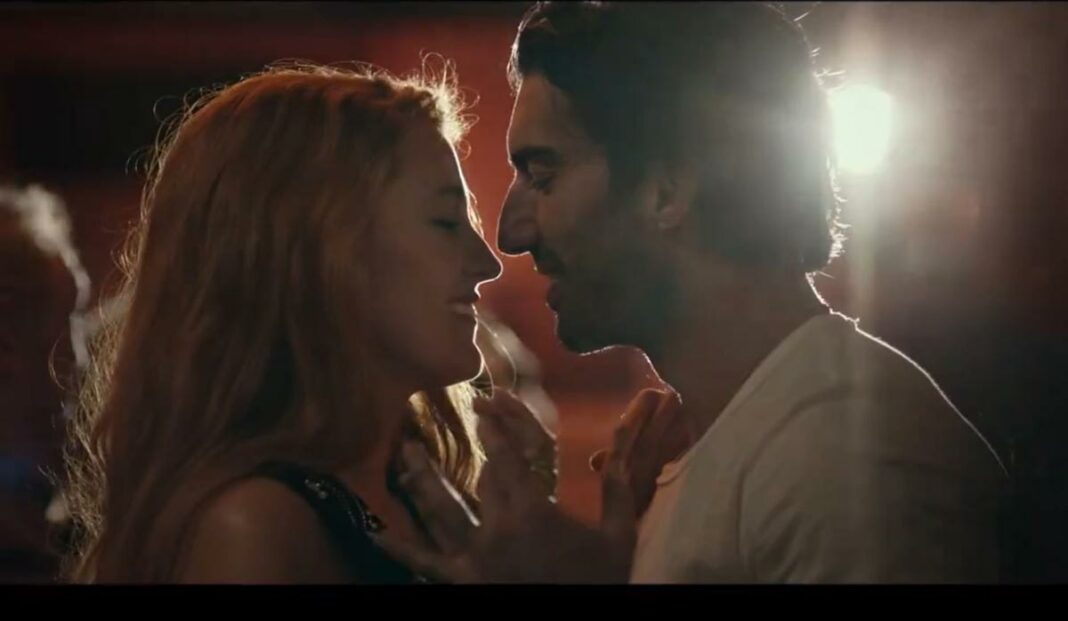Estimated reading time: 6 minutes
The latest film adaptation of Colleen Hoover’s celebrated novel has recently arrived in theaters, sparking considerable buzz and anticipation. With the spotlight on stars Justin Baldoni and Blake Lively, the movie explores the profound and difficult theme of domestic violence. However, despite the high-profile cast and the initial promise, the film struggles to deliver on its ambitious goals, falling short in several key areas due to internal conflicts among the cast and crew, as well as unresolved issues with the script.
One of the most significant criticisms directed at the film revolves around its casting and wardrobe choices. The character Lily Bloom, whose name alone seems to lean heavily into the realm of fiction, appears to be a major point of contention. The name “Lily Bloom” carries a whimsical quality that feels almost too contrived, undermining the character’s depth and believability. The film’s soundtrack, rather than enhancing the narrative, instead seems to dilute its impact, further detracting from the gravity of the subject matter. The fashion choices for Blake Lively, an actress renowned for her elegance and sophistication, have also been widely criticized. Seeing such a beautiful and accomplished actress dressed in ill-fitting outfits, such as pajama pants over fishnets, is jarring and inconsistent with her character’s portrayal.
The misalignment between Lively’s natural grace and the character’s wardrobe is a significant oversight. It’s almost as if the wardrobe team deliberately chose outfits that clashed with both the character’s narrative and the film’s overarching theme. The result is a presentation that feels disjointed and fails to support the character’s role. The fashion choices are so egregious that they have been described as a top-tier malfunction, highlighting a major disconnect between the film’s intended message and its execution.
This misalignment between character and wardrobe is not an isolated issue but rather a symptom of broader creative missteps. The casting and wardrobe teams’ inability to harmonize Lively’s portrayal with the film’s narrative highlights a missed opportunity to align every element of the film with its central theme. Instead of enhancing the story, these choices contribute to a sense of discord that detracts from the film’s overall effectiveness.
In contrast to the issues with casting and wardrobe, Justin Baldoni’s performance is a notable positive aspect of the film. Baldoni’s dedication to authentically representing domestic violence and raising awareness about this critical issue is commendable. His earnest efforts to bring attention to such an important subject are evident throughout the film, and his performance stands as a testament to his commitment to the cause. Baldoni’s work is a bright spot in an otherwise troubled adaptation, showcasing his genuine passion and dedication to addressing the issue with the seriousness it deserves.
However, Blake Lively’s involvement in the film, particularly in terms of her promotional efforts, has been a point of contention. Her interviews and public appearances often seemed more focused on promoting her personal brand rather than engaging with the film’s serious themes. This approach has led to criticisms that she detracted from the film’s intended message, with her promotional activities occasionally undermining the gravity of the subject matter. Instead of using her platform to support the film’s important themes, Lively’s focus on her own ventures has been seen as detracting from the film’s overall impact.
Despite these issues, the film does manage to offer a moment of redemption with its conclusion. The film’s ending, marked by the poignant lines, “It stops here. With me and you. It ends with us,” provides a sense of closure that is more satisfying than what might have been anticipated. This resolution allows for some reflection on the story’s themes and offers a glimmer of hope amidst the film’s overall shortcomings. It serves as a reminder that, despite the film’s flaws, there is still a meaningful message to be found.
Colleen Hoover’s storytelling, while frequently criticized for its focus on sensationalism and toxic themes, does manage to convey a message that resonates, even if the execution in this film is flawed. The adaptation highlights the challenges of translating Hoover’s literary style into a cinematic format. The stark contrast between the novel’s nuanced storytelling and the film’s representation underscores the difficulties inherent in adapting complex and sensitive stories for the screen.
The film serves as a case study in missed opportunities and creative conflicts. The disconnect between the film’s intentions and its execution leaves a lasting impression, revealing the challenges of bringing a beloved novel to life in a way that remains true to its source material. The film’s shortcomings in casting, wardrobe, and promotional efforts highlight the difficulties of translating a deeply emotional and socially relevant story into a visual medium.
The film’s struggle with internal conflicts and creative disagreements is evident in its uneven portrayal of the central theme. The issues with casting and wardrobe contribute to a sense of discord that undermines the film’s effectiveness. The lack of cohesion between the character’s portrayal and the overall narrative direction detracts from the film’s potential impact, leaving audiences with a mixed experience.
Furthermore, the film’s attempt to address domestic violence, while sincere, is overshadowed by its execution flaws. The disjointed presentation and misalignment of key elements contribute to a final product that falls short of its ambitious goals. The audience is left grappling with a film that, despite its earnest intentions, fails to deliver a coherent and impactful portrayal of a critical social issue.
The film’s conclusion, though more satisfying than expected, does not fully compensate for the missteps that precede it. The poignant ending offers a moment of reflection and a semblance of redemption but cannot entirely erase the film’s earlier shortcomings. The overall experience is a reminder of the difficulties involved in adapting complex and sensitive stories into a cinematic format, particularly when creative conflicts and execution issues come into play.
In the end, the film adaptation of Colleen Hoover’s novel stands as a testament to the challenges of translating literary works into film. The disconnect between the film’s intentions and its execution highlights the difficulties of adapting a beloved story while remaining true to its core themes. The film’s issues with casting, wardrobe, and promotional efforts contribute to a mixed reception, leaving audiences with a sense of missed opportunities and creative disagreements.
The film serves as a reminder of the inherent challenges in adapting complex narratives for the screen, particularly those dealing with significant social issues. The audience is left with a film that, while ambitious and earnest in its attempt to address domestic violence, ultimately falls short due to its execution flaws. The film’s conclusion offers a moment of redemption, but it does not entirely offset the issues that marred the adaptation.
Overall, the cinematic adaptation of Colleen Hoover’s novel becomes a case study in the difficulties of bringing a beloved literary work to the screen. The film’s shortcomings in casting, wardrobe, and execution highlight the challenges of adapting complex and sensitive stories into a visual medium. Despite the film’s sincere efforts to address an important issue, it ultimately struggles with creative conflicts and execution issues, leaving audiences with a mixed and somewhat disappointing experience.
- India’s Reverse Cha-Cha-Cha
- Continuing Airworthiness Management Organisation (CAMO): The Heart-and-Soul of Airline Safety & Efficiency
- Quarter Century of Tejas, India’s Light Combat Aircraft (LCA)
- The Challenge Of Cyber Theft And It’s Impact On National Security
- When Honest Feel Harassed: Why India’s High Net-Worth Individuals (HNIs) Are Losing Faith in the System
- India | Readying For Wars

























